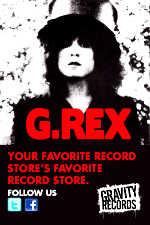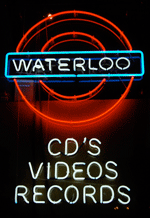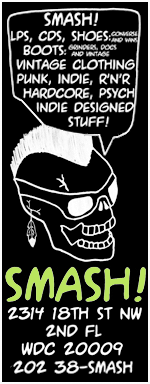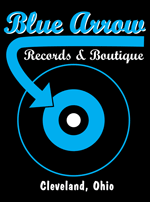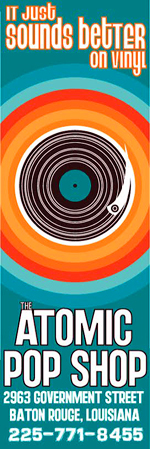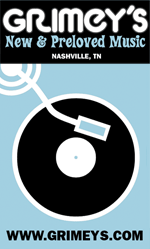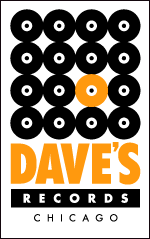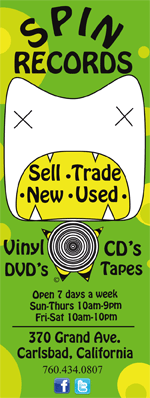
Thelonious Monk was not only one of the most innovative pianists in the history of jazz, he additionally remains one of the vast form’s most well-known figures, though artistic achievement and height of profile still doesn’t guarantee that your live tapes won’t somehow end up in a dumpster. That’s reportedly what occurred with the documentation of the Monk Quartet’s March 5, 1963 performance at Odd Fellows Mansion in Copenhagen, Denmark. Along with the pianist, tenor saxophonist Charlie Rouse was on the bandstand. So were bassist John Ore and drummer Frankie Dunlop. Thankfully, the evidence was rescued, and it’s getting a multi-format reissue as Mønk on September 28 by Gearbox Records.
In pop, rock, and related genres, the live recording can occasionally encompass something great, but most often, the contents are eminently skippable, sometimes even by fans of the artists represented. In jazz however, performance documents are essential. Ellington at Newport. Coltrane’s Live at Birdland and his two sets from the Village Vanguard. Bill Evans’ Sunday at the Village Vanguard and Waltz for Debby. Wes Montgomery’s Smokin’ at the Half Note. Sun Ra’s Live at Montreux. A half-dozen by Mingus. Dolphy’s Live at the Five Spot. Shelly Manne’s At the Black Hawk volumes. Kirk in Copenhagen.
As the 20th century progressed, playing live (touring) in pop and rock became increasingly a promotional tool for record sales, but in jazz the gig (often extended residencies at specific clubs) was and remains integral; yes, as a way to pay the bills, but also as an endeavor in the betterment of the art. And as jazz’s commercial prospects diminished, players often went where the gigs were.
Europe was a common destination, even during jazz’s heyday, with Denmark especially receptive to the music. As listed above, Roland Kirk played there, and of course so did Monk, along with thousands of others; the amount of cash made by numerous small but dedicated labels in the reissue of recordings from Copenhagen alone would likely fill a few steamer trunks.
This Monk set fits that bill somewhat, though the fact that it was almost lost expands the occasion and adds to the allure. The belatedness isn’t so unusual. Monk has more than a handful of live sets in his discography, but two of his best, Live at the It Club and Live at the Jazz Workshop, both recorded in 1964, didn’t appear until after his death in 1982.
With ample performance material available for the hearing, obviously some recordings will be more worthwhile than others. Where does this set fall on the scale? Pretty high, though some context will be helpful for newcomers, as in the promotion for this album, the quartet here is cited as Monk’s “most critically acclaimed lineup.”
I’m unsure of the calculus employed to come to that conclusion, but it doesn’t jibe with my perception of how the pianist’s career is assessed. Perhaps the observation relates to steadily working bands, for in terms of lineups on record, those found on the first two Riverside albums, The Unique Thelonious Monk and Brilliant Corners, and of course the absolutely essential Blue Note Genius of Modern Music volumes (hell, even the later Riverside 5 by Monk by 5) have received more (wholly deserved) adulation by critics.
But in terms of working groups, I’d say the one with tenor saxophonist Johnny Griffin, bassist Ahmed Abdul-Malik, and drummer Roy Haynes heard on Riverside’s Thelonious in Action and Misterioso live sets are regarded more highly, to say nothing of the prior band with John Coltrane heard on two (also belatedly issued and rediscovered) Blue Note albums.
I don’t think I’m being contentious in making this observation. But this band with Rouse (who replaced Griffin back in ’59), Ore and Dunlop was his working unit around the moment Monk made the cover of Time and, after years of derision and neglect, squares suddenly (if not quite en masse) found it appropriate to praise his work. So maybe that’s it.
Make no mistake, the lineup heard here did deliver two of Monk’s finest Columbia-era studio records, Monk’s Dream and Criss Cross, both released in ’63. But less auspiciously, two lesser live LPs, Monk in France and Thelonious Monk in Italy, are the byproduct of this band. However, those date from 1961 (both released in ’63). This set lands between the studio dates for Criss Cross, so the participants, now with roughly four years’ worth of familiarity and in the midst of a creative peak, sound terrific.
Mønk’s closest studio counterpart is Monk’s Dream, obviously due to the personnel, but also song-selection, as the title-track is here (closing the live set in a direct reverse of the tune’s opening spot on the studio alb) along with a terrific solo “Body and Soul” and “Bye-Ah,” which opens the Copenhagen set. Like the version on Monk’s Dream, “Bye-Ah” begins with Dunlop briefly alone, not so much a solo as a prelude, though the key is variation and extension.
The drummer’s entrance is longer, with the entirety of the Mønk version nearly twice as long, topping ten minutes, and therefore significantly different from the baseline studio cut from 1952 on Prestige. They also expand “Nutty” to nearly ten, which again nearly doubles the studio take from his Prestige LP with Sonny Rollins and the earlier live version from Misterioso.
Longer durations can mean a rhythm section falling into inexpressiveness (which was kinda the problem with the earlier live LPs by this quartet), but they sound engaged across side one and into flip’s lengthy reading of “I’m Getting Sentimental Over You.” Rouse’s soloing is as sharp as his best with Monk, and he was with the man for a long time. And the pianist is his splendid sui generis self throughout, especially during “Body and Soul” (solo Monk being a special thing indeed), and the band rides it out like champs with “Monk’s Dream.”
It’s just one set during one night during one stay in Copenhagen, but everyone was clicking beautifully, and within a matter of weeks this group would be no more. And so, altogether Mønk is a very special discovery.
GRADED ON A CURVE:
A













